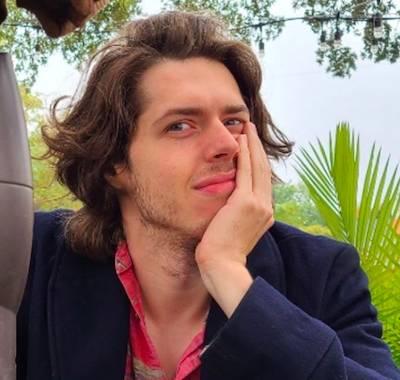The Willem Dafoe of Dinosaurs: How “Jurassic World: Rebirth” VFX Supervisor Charmaine Chan Created the Distortus Rex
Charmaine Chan began working at Industrial Light & Magic 18 years ago—it was her first gig out of college, starting off as an assistant technical director and contributing to Michael Bay’s Transformers. Chan stayed on at ILM and continued to work on some of the biggest franchises there are, becoming a digital compositor on Star Wars, Mission: Impossible, and films within the Marvel Cinematic Universe. As her talent sustained her and her capacities grew, she was more than ready to take on a dino-sized challenge.
Chan served as ILM’s visual effects supervisor on Jurassic World: Rebirth, reteaming with filmmaker Gareth Edwards, taking on her first VFX supervisor role on Edwards’ elegant sci-fi actioner The Creator. Once again, Chan helped Edwards build out an entire, fantastical world that felt lived-in and real. Since Rebirth is set on an unexplored island — Ile Saint-Hubert, “Site B” — where scientists have been foolishly tampering with dino-DNA once again, Chan and her team introduced new, hybrid dinosaurs, some fantastic, others grotesque, but nearly all of them capable of terrorizing any human being foolish enough to set foot on IleSaint-Hubert.
Rebirth follows mercenary Zora Bennett (Scarlett Johansson) and her team, who are tasked with a secret mission to the island to collect dinosaur DNA for a pharmaceutical company. Whether Zora is marveling at or battling dinosaurs — including those monstrous hybrids — there’s always considerable weight and texture to the effects, the calling card of the franchise since Steven Spielberg and his team first wowed us in 1993 with Jurassic Park. Thanks to a consistent mix of practical effects and CG, Chan and the team at ILM helped bring the franchise back to its awe-inspiring, action-adventure roots. We spoke with Chan about how she breathed life into these prehistoric show-stoppers.
What are the first steps that you and your fellow visual effects artists at ILM take in creating the dinosaurs?
We were working on dinosaur asset development and building, likely around the spring of 2024. It’s just reading the script, asking the questions we need to ask, and breaking it down to: “Alright, these are our dinosaurs.” We needed Gareth to lock down his designs quickly, which is always hard to get a director to do. We really wanted to do 3D prints of all our dinosaur heads so we’d have lighting references and maquettes — and also so the actors knew what they were interacting with.
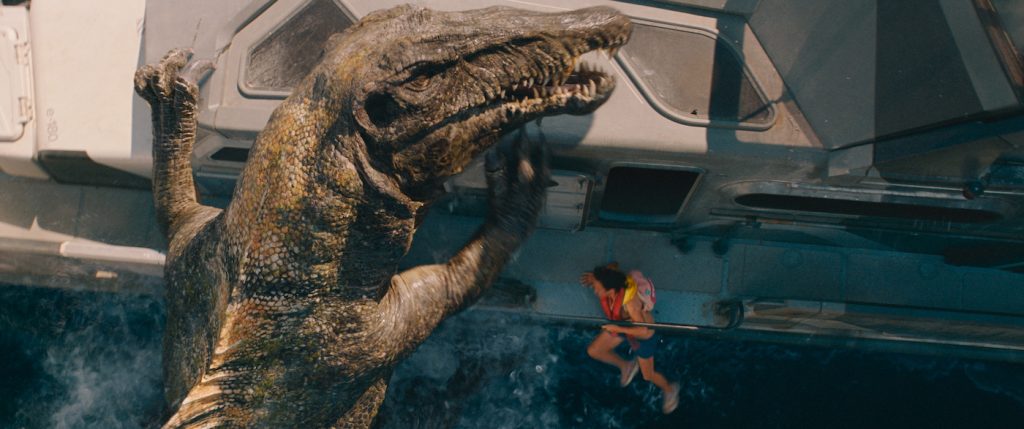
For your work on the Star Wars franchise, you referenced the franchise’s extensive canon and years of cinematic history. For Jurassic World: Rebirth, do you reference [make-up effects artist] Stan Winston’s work on the original film? Do the original animatronics ever influence CG?
We did a huge deep dive into both the original Jurassic Park and Jurassic Park III. Gareth actually loves Jurassic Park III. He was especially drawn to the raptors — the way they were animatronic, the leather texture of the skin, that sheen. We even considered putting that same specular response into our T. Rex. Since he’s walking through the river, of course, he’s going to get wet, so we wanted to get that same wet, tactile look. Even before Stan Winston, we went back to the early 1900s, looking at Charles Knight’s original T. rex paintings. The style is chunkier, the stance is shorter, and Gareth was drawn to that more than the T. Rex from the last Jurassic World films.
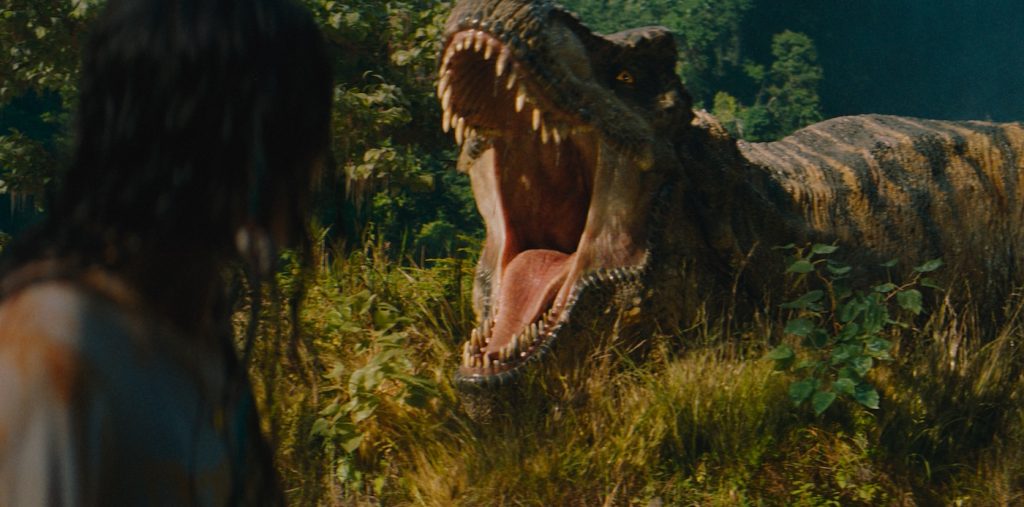
A few people have commented that the D-Rex, the Distortus Rex, bears a resemblance to H. R. Giger’s Xenomorph design from Alien. What inspired the D-Rex’s creation?
We definitely explored a whole circle of different reference imagery. The modeler who designed it — he’s an amazing artist — really helped Distortus become what it is. You can still sense the T. rex in there. The main thing was giving it character. Gareth described it as making him the Willem Dafoe of dinosaurs. We wanted something unique and asymmetrical. We went through several rounds of design, but it was actually one of the first that got approved, because Gareth knew that was the one. Distortus is a sad fellow. He’s been trapped on this island, and I think you feel it. It was fun trying to use a T. rex as the base and imagine what would happen if experiments went wrong.
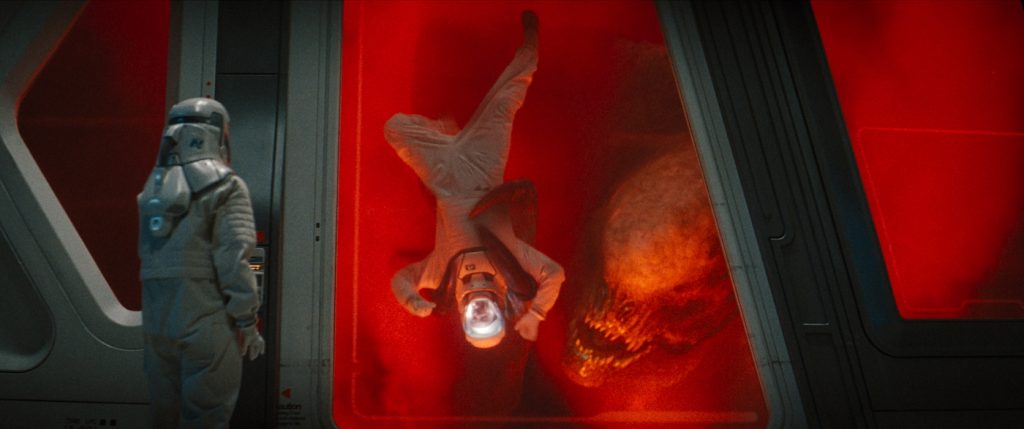
Were there any qualities you and the animators wanted to elicit some sympathy for Distortus?
He’s super sensitive to light, which is why he was going towards the flare when Duncan Kincaid (Mahershala Ali) lights it. It’s curiosity as well as fear — frightened, unsure of what’s going on. Our animators looked at some references of gorillas when it comes to its general movements. With Gareth, it’s always about asymmetry, so one arm might be a little less strong than the other arm. It’s just a creature that’s trying to find its way around.
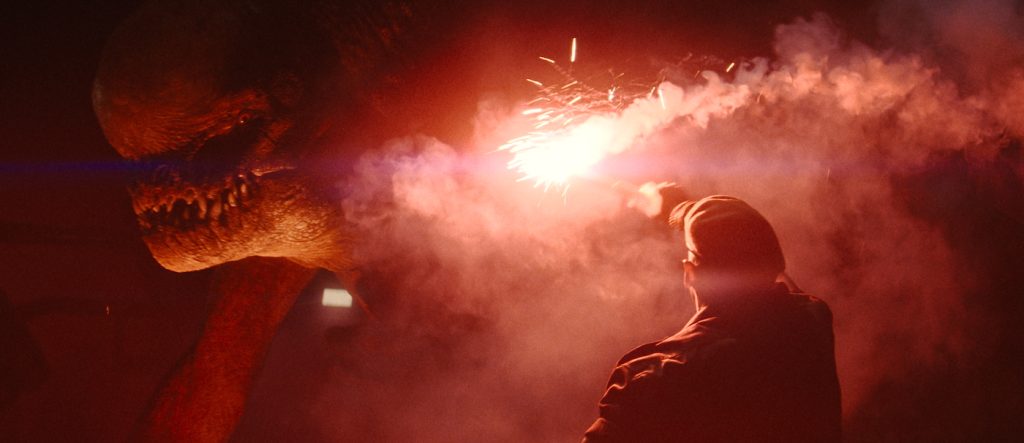
Where you and Gareth create a very tangible sense of scale is with the Mosasaurus. The frame can barely hold up to or keep pace with the animal. How’d the sea creature’s scale evolve throughout animation?
The Mosasaurus went through the most scale changes of any creature. We created the Mosa based on something very similar to the Mosa before, and then we’d start to put them in the shot, and Gareth would go, “Not big enough.” And you’re like, “This is already two times the size of a whale — that’s ginormous.” He’s like, “No, it needs to be cut off from the frame. It needs to feel absolutely massive.” There were a couple of shots where we scaled up to 400% larger than the original size and ratio. It was almost a shot-by-shot basis. We basically went through each shot and went, “Okay, that one’s 100%. That one’s 250%. Alright, that one’s more like 100% again.”
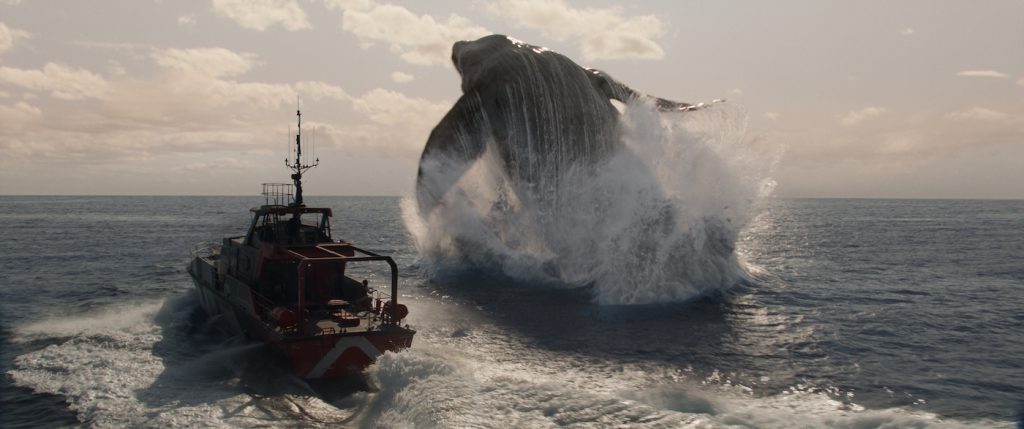
How does alternating the scale of a Mosasaurus affect the other visual effects, like the massive body of water?
It affects our water simulations as well. Luckily, the way things were composed and the way we mixed both effects, water and practical plate photography, all worked. You weren’t too worried about the scale feeling unrealistic. There were many discussions [about shooting the sequence]: Is it going to be shot on the ocean? In a tank? Or will it have no water at all and be on a blue screen stage? What combination would provide safety for the actors while also maintaining flexibility for CG to still feel realistic? It was a combination. Some footage was shot in the open ocean with stunt doubles. For close-ups with the actors, that was done in a tank, on a rig, with more safety precautions.
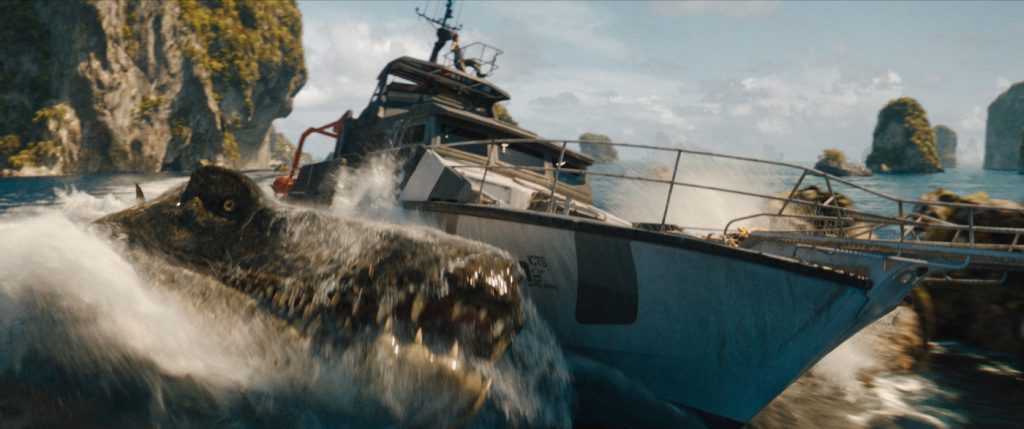
Even though you have the titanic task of bringing dinosaurs back to life on-screen, in 2025, is digital water still one of the industry’s massive challenges for VFX artists?
We knew water would be the most challenging thing. Before finalizing any dinosaurs, we started testing the water sims. We had different sea creatures we’d animate—whale, dolphin, and more—to simulate what the water would do. We had amazing FX artists, led by our CG supervisor Miguel [Perez Senent]. They looked into water dripping off the creatures to secondary splashes caused by the primary splash. Every little detail they could think of, they created. When we’re in the open ocean, and the boat’s driving through real water, we’re trying to replicate those splashes. We drew on real-life photography references, but our goal was to push the boundaries of how realistic CG water can look. We had an amazing team determined to finally “unlock” that button — where the audience can’t tell it’s CG water.
When you create these massive worlds in The Creator and Jurassic World Rebirth, what qualities in VFX do you and Gaerth Edwards chase? What makes CG in a fantastical world believable?
It’s about not trying to perfect the visual effects, if that makes sense. One of the great things about Gareth is that he shoots so much beautiful plate photography. We use that as our base. You want something tangible and grounded in reality. Even if it’s sci-fi or set on a fictional dinosaur island, it still needs to feel like it could exist. Gareth never treats VFX as a full replacement — it’s always an augmentation, adding things into what’s already there. Gareth would rather roto people and add things into a real-world plate than rely on blue screens. When you add something into an environment that already exists, it just sits better.
Featured image: D-Rex in JURASSIC WORLD REBIRTH, directed by Gareth Edwards.

